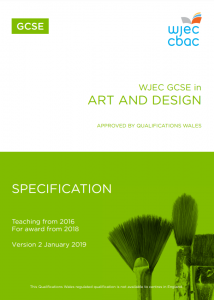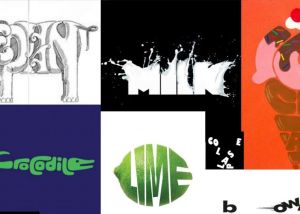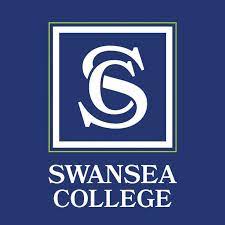Project Description
GCSE Art and Design – Graphic Communication
Exam board: WJEC
Exam code: 3654QS
Why choose this course?
If you enjoy being creative, want to increase your practical skills and improve your analytical,
communication and research abilities, Graphic Communication is a great subject choice. The
skills you gain make it a great complement to other subjects giving you a different way of
seeing things and making sense of the world around you. It can help you with further study
and prepare you for the world of work.
Throughout the course, you will learn how to design visual materials to convey information,
ideas, meaning and emotions in response to a given or self-defined brief. Areas of study
include communication graphics, advertising, branding, packaging design, typography and
motion graphics. You will look at different approaches and use lots of different media,
techniques and materials.
Alongside improving your practical expertise, you’ll learn how to: develop, refine and record
your ideas; present a personal response that realises your intentions; improve your creative
skills through the effective and safe use of media, materials, techniques, processes and
technologies; successfully use visual language and the formal elements e.g. colour, line, form,
shape, tone, texture; use drawing skills for different needs and purposes and develop an
awareness of the importance of design in the modern world.
Who would this course suit?
Studying this course will enrich and broaden your curriculum, giving you an excellent
foundation for whatever you want to do or study afterwards. The transferable skills you will
gain, such as creativity, analysis and problem solving, complement a range of other subjects
and careers.
It is vital to have an interest in art and design. Although an ability to generate and record ideas
is important, you will have plenty of opportunity to improve and develop your observational
skills. Given that you will have the chance to use a wide variety of materials, it is good for
students to have an open mind and to explore ideas in a number of ways. It is important that students have a mature attitude and are willing to work hard.
Curriculum
such as the work of historical and contemporary graphic designers and the different purposes,
intentions and functions of graphic communication as appropriate to their own work.
- posters
- brochures
- flyers
- T-shirts
- CD/DVD sleeves,
- book covers
- magazine spreads
- calendars
- stamps
- packaging
- publicity materials
- vehicle livery
- billboards
- advertising
- logos
- branding
- corporate identity
Work is not limited to one area of study
As part of their studies for Graphic communication students should aim to present clear
evidence of addressing the assessment objectives, as in the following examples.
AO1
- Develop ideas that are informed by investigative, contextual and cultural studies of historical and contemporary graphic design and other sources relevant to their selected area of study
in their own and other societies. - Explore a wide variety of work produced by graphic communicators and understand the
differences in their methods, approaches, purposes and intentions such as ethical
considerations, marketing strategies, promotional campaigning, and design for print and the web. - Provide evidence of analytical skills and critical and contextual understanding by appraising, comparing and contrasting the work of relevant graphic communicators and other historical and contextual sources, using this to inform their own work.
- Increase awareness of the wide variety of graphic communication processes and outcomes and the differences between these.
AO2
- Refine and reflect upon work as it progresses by exploring ideas, selecting and
experimenting with an appropriate breadth of graphic communication approaches and processes, including the purposeful manipulation of digital software. Exercise skilful and safe application of these to maximise creative potential and produce quality outcomes. - Explore a stimulating and rich variety of resources to initiate and develop innovative ideas.
Pay due regard to line, tone, colour, shape, texture and other visual elements to explore and
communicate ideas. - Provide evidence of appropriate depth and breadth of study of graphic communication
practices, including drawing as a means to explore and communicate ideas. Employ sensitive
control, for example in refining detail, such as selection of fonts, relationship of typography to
images and recognising suitable reprographic processes. - Show discrimination in reviewing ideas as work develops. Establish a clear working
relationship between working methods and outcomes by documenting significant steps so that final outcomes do not emerge without evidence of the creative process.
AO3
- Gather, select, organise and communicate information that is relevant to their personal
interests as a consequence of careful research and analysis of a stimulating and rich
variety of resources. - Record ideas, first-hand observations, insights and judgments by any suitable means, such
as layout drawings, thumbnail sketches, storyboards and written notes that are relevant to
and support personal intentions. - Critically reflect on work as it progresses in order to review what has been learned, acquire
deeper understanding and clarify purposes and meanings.
AO4
- Present personal, imaginative final outcomes, together with selective evidence of thinking
and production processes, that effectively realise the student’s stated intentions, fulfil any
design brief and demonstrate critical understanding of visual and, where appropriate, other
forms of communication. - Make explicit connections, where appropriate, between the different elements of the
submission, including contextual, practical and written responses, presenting work that is
meaningful, well-informed and in a sequence that can be easily followed and results in
quality outcomes. - Consider different presentational formats and select the most appropriate for the
submission. Due regard should be given to the purpose of the work and how it might
engage the interest of an audience or potential clients. For example, alternative ideas might
be presented using PowerPoint to show possible layouts, colourways and typefaces as well
as how large-scale work such as billboards might look in location.
Assessment
represents the course of study. This is worth 60 % of your overall marks.
seven tasks and you have to complete one of them. You will get preparation time, plus ten
hours of supervised time in which to complete your final piece. This is worth 40 % of your total
marks.
- 60% coursework
- 40% terminal examination
Exam Access Arrangements
Exam access arrangements allow candidates/learners with special educational needs, disabilities or temporary injuries to access the assessment without changing the demands of the assessment.
For example, readers, scribes and Braille question papers. In this way, Awarding Bodies will comply with the duty of the Equality Act 2010 to make ‘reasonable adjustments’.
We can arrange exam access arrangements and assess you with our special assessor. The deadline for application to the exam board is the February of the year the learner sits exams.
To find out more about exam access arrangements click here
FAQs
SWANSEA COLLEGE GCSE COURSES
Have a question? Ask our virtual assistant on live chat below
or call us on 01792 535000 and speak to our experienced Student Adviser.





















